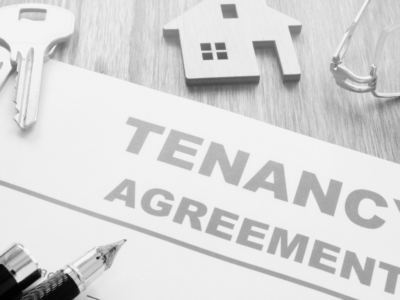Sustainability is no longer just a buzzword. According to Opinium research, a staggering 78% of the UK public believe they have a personal responsibility to deal with the climate crisis.
So today, living sustainably is a challenge that all of us face as we look to do our bit for the planet’s future.
Due to that increased awareness, renters are becoming more conscious of their green choices, which includes the properties they rent, and are therefore looking to landlords and estate and letting agents to provide sustainable housing options.
The importance of sustainable property is not new. As far back as 2010, 86% of property investors agreed green buildings would become more valuable in the years to come.
So, it’s now time for buy-to-let property owners to take a closer look at future-proofing their homes and investments for years to come.
The UK Government is looking to cut emissions across the country by 68% by 2030, and it has made it clear that the rental sector must do its part to also reduce emissions and embrace sustainability across the industry.
Last year, the Department for Business, Energy and Industrial Strategy ruled that as of April 2025, all rental homes must have an Energy Performance Rating (EPC) of C or above, making it clear that the lettings sector must do more to support the move to a greener way of life.
But what does this look like for landlords, and how can they, and letting agencies, implement changes to help turn the rental sector green?
The urgent need for clarity in green letting legislation
Recently, the government made an announcement that it will be scrapping its flagship Green Homes Grant, only six months after it was rolled out.
Naturally, this comes as daunting news for landlords and letting agents. Many of whom saw the funding of up to two-thirds of the cost of green works as a key part of their carbon-cutting initiatives.
Without access to this grant to cover specific home improvements, such as insulation, double glazing and low carbon heat, many landlords may feel intimidated by the costs of going green.
The decision made by the Government will be detrimental to the UK’s carbon footprint, and if we are ever going to make a decent attempt at reducing emissions by 68% by 2030, then the UK needs a strong alternative to the grant this year.
Both clarity and direction were already lacking before the recent announcement to scrap the grant. Over the course of its tenure, 95% of the initial funding set aside for the green homes grant was unspent due to the slowness in making grants and paying installers.
This effectively nullified a large portion of the initiative, all while frustrating landlords in the process. If there is anything that large scale initiatives relating to property and the climate have in common, it is the vital need for a decisive planning.
Further schemes to promote going green
This is not to say, however, that there isn’t support for those who are serious about turning the rental sector green. Landlords can benefit from Green Reward re-mortgages.
Supported by Foundation Home Loans, these are available for private rental sector properties that already have an Energy Performance Certificate (EPC) rating of C or above.
The loan has been designed to support those landlords who have made environmentally friendly choices with their properties and helps them offset the costs of these improvements.
Additionally, landlords who use the scheme will benefit from an ‘early re-mortgage’ basis and won’t have to wait the usual six months before re-mortgaging an improved property to the lender.
Everyday changes that are a step in the right direction
Of course, alongside big refurbishments to properties, landlords and letting agencies can begin their green transition in smaller ways, while also showing current and potential tenants that they’re conscious of their environmental impact.
Some examples include making it clear to those living in the property of the local recycling times, ensuring they have a recycling bin and food waste boxes, where offered, and making the most of LED bulbs. These are all small steps that can have a positive impact on the sustainability level of a household.
By taking on greener changes across the property, landlords will also make themselves more appealing to tenants: a better EPC rating means lower energy bills, which is an attractive offering for tenants when many have seen a steep increase in electricity usage when working from home.
We can all do our bit to be greener, and at LRG we are also taking steps to embrace sustainability.
As of August this year, all of the energy used across the company will be green, including how we power our offices.
In addition, all our property signage boards – an iconic symbol of estate agents– are now both recycled and recyclable, reflecting the green approach the industry as a whole is taking.
There is a growing focus on green homes across the country. We know more tenants are seeking energy-efficient homes and the benefits they bring, such as an improved quality of living, a potential reduction in fuel bills and the sense that you are doing your bit for the planet.
Now is the time for the lettings sector to embrace the next big challenge and step up to help turn the industry green.
Author: Mike Cook, Director of Lettings, LRG






















Comments